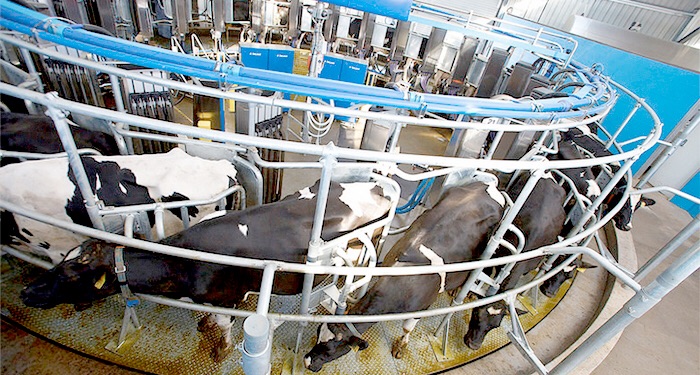
A straw-based product first popular in the 70s is making an unexpected comeback in dairy rations due to a combination of modern grazing techniques and highly fermentable TMR diets.
The alkalinity and nutritional content of nutritionally improved straw (NIS) – first developed in the 70s as a way of improving the value of straw as a feed – appear to be able to balance modern diets where there is a risk of sub-acute ruminal acidosis (SARA), resulting in increased dry matter intake and restored butterfat levels.
David Cubitt from Sundown, who has been manufacturing NIS for decades, says he was initially surprised at the renewed interest in the product and set out to investigate why.
“I commissioned some studies to understand why demand for NIS from both grass-based and TMR-fed dairy herds suddenly rose,” he explains.
“We’ve now completed three trials on TMR-fed dairy herds looking at how cows on grazed units have responded to the introduction of NIS, and the indications are that NIS works as a balancer for starch in rations where there is a risk of acidosis.”
David says the effect of adding NIS varied slightly depending on the cows and the ration composition, but it generally led to an increase in dry matter intake creating either an improvement in milk or butterfat yield, and an increased feed conversion efficiency.
"With more financial pressure on the dairy industry, the emphasise on maximising nutritional intake at least cost continues – but that can sometimes be at the expense of the rumen.
"I think this why we’ve seen considerable interest in two areas: from farmers who intensively graze cows and who can sometimes see evidence of SARA from high sugar, low fibre grass especially in the spring and autumn; and in herds housed year-round where it’s hard to combine sufficient intakes of high energy TMR with good rumen health. NIS is playing the role of rumen balancer for high performance diets.”
In the studies, the grass-based farmers have been feeding NIS pellets either in the parlour on their own or mixed with concentrate, or even in the field ad lib. “Cows actually choose to eat it so it appears to be an easy, cost-effective way of getting effective fibre into the animals,” says David.
“But rations for housed cows can be short of effective fibre as well. Adding too much chopped straw to the TMR to remedy this can lead to sorting, reduced DMI due to gut fill, and a significant energy drop. Many farmers then resort to adding a rumen buffer – which is simply like eating lots of antacids without solving the root cause. So we’ve found that adding NIS instead of chopped straw eliminates sorting and negates the need for a rumen buffer altogether.”
